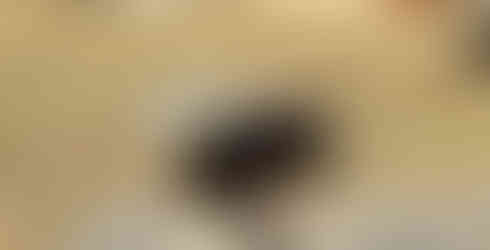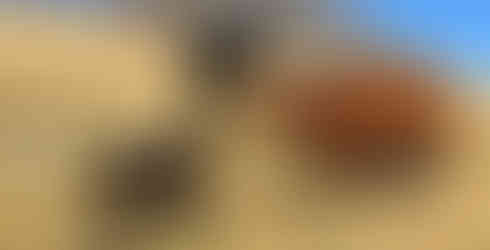"Pure Golden Magic"
- Allie@FoothillFrolicFarm
- Mar 3, 2021
- 9 min read
The first day of March brought rain. On the second day, I peered out the homeplace windows to see the brilliant sunshine rising a hair shy of due east. It placed its first golden highlights on the tarnished white clapboard of the old Lacy house. Sunshine in late February, March and early April has a unique presence. "Pure Golden Magic" I like to call it. So when I checked the extended forecast and saw that we had 7 days of sunshine coming, this made my dorsolateral prefrontal cortex, the conscious portion of my brain, activate and send nurturing signals to my whole body. I could not help but feel whole, grounded, and maybe even a bit epic. Now this "pure golden magic", cannot be duplicated in the summer or in the deep winter. It only comes about in the seasonal transitions around the equinoxes. When the sun sets and rises due east and due west. Going from Winter to Spring, or from Summer to Fall. It generally starts about 3 weeks before the first day of spring and can last about 3-4 weeks after. For the Fall, the transitional time is felt more on the southern side, after the equinox. Than on the northern side, before the equinox. Translating into about 1 week before the Fall equinox and 7 weeks after. In part, "pure golden magic" imbues its beauty because it represents hope, passing, and intrigue. The hope of pleasant weather to come. The passing of the bitter weather that has been. The intrigue of a fleeting moment, because of its impermanence. I can only attest for this "pure golden magic" in the geographical regions of East and Middle TN, as this is where I have lived all my life.
Over the past week and 1/2, we have had about 3 of these days. I sensed the first one immediately and took advantage. It was on Sunday, February the 21st. The timing was perfect for planting spinach seed. The Moon was in Taurus and it was waxing, which means increasing in size. The moon increases in size from new moon till full moon and this is referred to as the 1st and 2nd quarters. I think it is nice to know that 1st, 2nd, 3rd, and 4th quarter terminology can be talked about without reference to the stock market exchange. I keep close always my autographed copy of Raising with the Moon, by Jack Pyle and Taylor Reese and my yearly biodynamic calendar. These are two great resources for working with the natural energies of the our planet and its relation to the moon and the constellations. It was back in the early 2000's, at the Appalachian Fairgrounds in Gray, TN, when I got to meet Mr. Pyle and Mr. Reese in person. There are some slight differences within Old Time Appalachian and Biodynamic perceptions of the moon signs. Overall, I like knowing both of them so then I can make my best informed decision on when we want to plant a certain crop, castrate bulls, or work with any other living thing within an ecosystem.
I grabbed my certified organic spinach seed, Giant Winter variety, and headed out to the garden field. I knew I was going to be working in a small area that had been prepared last fall. In the Fall, it is always a good idea to think about your early season crops and where they are going to be planted. Are they going to be transplanted, or direct seeded? In wet winters, this is a must.
Thus far, in the garden field, all vegetables have been planted in a no till fashion. The garden field has only been used as pasture since my grandparents stopped doing a big garden back in the early to mid 90's. My strip rows measured out at about 220 ft long and I wanted to leave a pasture strip of grasses and legumes in between each strip row. We laid new metal sheet roofing down, in the long 220 ft rows, to initially dead kill the perennial pasture. Despite using the term dead kill, this process actually is adding energy and life to the soil. When the grass and legume's green growths and underground roots breakdown, this adds valuable nutrients to the soil. This also increases moisture, microbial life, and earthworm aerators. The beauty of this no till process is that it activates all these mentioned positives, without disturbing the life and structure of the soil. Next, the metal was taken up and hay was put down really thick. The final component to our no till method is compost. After the hay mulch has been put down, and placed to the desirable width and thickness, it acts as a nest to hold the compost either in holes, or in rows. All the summer crops that were grown last year in 2020 were the byproduct of this no till method. Summer crops perform excellently in this medium. Plus, there is not any management after all the work has been done initially, other than the wonderful activity of harvesting.
Compost is very precious to me. One out of the ten moving hauls we made from our old farm consisted of 6 large, 1,000 lb, tote sacks of our farm made compost ("you really can take it with you when you go"). The most exciting thing about being here is the new found luxury of lots of well rotted manure. At Arugula's Star of Neal Family Farms, we made all our compost without manure, because we did not have a large herd of cattle. Our compost was made from leaves, wood chips & dust, old hay, fresh hay clippings, wood ash, and rock minerals. Now that we are here though, the thought of being able to incorporate the cattle's manure back into the land in a regenerative way is very exciting. Also, the volume of compost that we can create here with the cattle manure and hay will be more substantial.
After the hay and compost layers that were put down last summer, we were able to apply one more layer to the strip rows in the fall. This last ingredient to the strip row cake was tractor buckets full of well rotted manure. I knew that it would be important to have some raised soils in the early spring to get the early vegetables planted. It is in one of these strips where I started direct seeding the Giant Winter Spinach. Next, I moved two strips to the North and started planting Radish seeds. Three certified organic varieties, Sora Red, French Breakfast, and Pink Beauty.
"Pure golden magic" happened again on February 24th and 25th. Sugar Snap and Snow Peas are also early season crops that need to be planted in late February or very early March. I love vining crops and so with that comes trellis systems. We put up our first permanent Trellis strip row here last year of 248 ft and that is where the Heirloom Carolina Red Dry Beans were grown. This is where I knew the Peas were going to go. Before I planted the pea seeds, I needed to prepare, scuffle, and pull up some wild plants that had grown through the strip row layers of mulching. Good textured, light, and rich compost mixed with broken down hays and soil always feels so good to the hands. I got the certified organic Cascadia snap peas planted in this lovely soil during the 2nd Quarter when the moon was in Cancer. To finish out the long row, I am waiting for more seeds of both that and Schweizer Riesen heirloom snow peas.
While I was busy working on the pea rows, I would peer up to the very northern part of the garden field to see husband, father, and son working away at my request of a simple greenhouse for the onion, kohlrabi, cabbage, lettuce, and greens seedling trays. The sky was crisp and blue and from my perspective they seemed to be configured in a way that seemed to evoke an artistic discussion, in an art history class. The placement of the new greenhouse structure, started with an old open shed structure that housed Grampy's bee brood and super boxes. This bee house had been built back in the 70's and was on a downward decline. I liked its placement though, as it sat it on a southern slop that would warm up quickly in the late winter. I thought we could have at least used the post that were still in the ground, but after an overview from Matthew, he decided that we should start from scratch. We needed 7 post, and for squaring purposes, Matthew wanted them to be square. Grampy had a hunch that his Uncle Cecil had stored away some Mulberry wood post in the barn. They were going to be used for something down at the lake, but never were. Mulberry is an excellent wood for outside use. Sure enough, Grampy, Matthew, and Eastenn Dutch went right to the spot in the barn where Grampy thought they might be. There they were, exactly seven, what luck!
The cattle sense this "pure golden magic" as well. There have been 8 new calves born here since Black Joy was born, bringing our total to 17. There is Panda Briar, Rudy Thirteen, Birthday Snowfall, Black Sprinter, Silver Moon, Calm Rider, Little Pinky, February Frost, Triple Two, Gemini Daybreak, Sunny Squirt, Cascadia Pea, Dot Spot, Cedar Rain, Leg up 4, and Leapster the Second. I could tell a story about each one these new littles ,and yes, their names would coincide with the their story. I bet here in this next seven day stretch of "pure golden magic" there will be a handful of pregnant cows/heifers adding more calves to the herd.
Tomorrow, one of my morning chores will consist of walking into the old granary, that underwent a much needed winter cleaning, to mix the cattle's new mineral/nutrient mix. The building was already complete with an old fashioned materials scale that still works. Starting at the first of 2021, the cattle now receive a free choice mixture of Thorvin Kelp, Redmond Salt, and Diatomaceous Earth (the amorphous type). Many years ago, I had given my Dad one of Joel Salatin's books called, 'Salad Bar Beef'. I started reading this book for myself last year. This book has been enlightening and inspiring, because he puts into words all my inner beliefs of what we want to facilitate and work towards here on the farm. I have come to think of him as a masculine cheerleader standing on the sidelines, of all the fields here, rooting us on. All that I believe can be done here, has already been time proven on other cattle operations and the taking point is that you just have to start. I gleaned a good feel for cattle rotations last year in the hay fields we turned into rotational grazing pastures. Each year is an opportunity to continue to regenerate and improve the land through better management of cattle. We for certain cannot do it all at once, but if there can be a couple positive incorporations every year then that will eventually get us somewhere better than before. With farming, there is a long road ahead, so I would rather be traveling the one that leads to regeneration, as opposed to its non noteworthy opposite, degradation. So the first of the positive incorporations has gone over quite well with the cattle. The cattle are loving their new mixture. We switched from a free choice, pre-mixed, bagged mineral/nutrient, called Ultralyx, that we got from M & M farm store. We were getting this last year, because it was the best basic nutrient supplement mixture I could find locally that did not have artificial flavoring or a list, in my opinion, of non acceptable ingredients. Also, I knew we would have to do some custom ordering to get the new stuff. I wanted to get everything lined up to be able to start the new cattle mineral/nutrient mixture at the start of 2021. We drove all the way up to a Thorvin warehouse in Salem, VA to pick up a pallet of the Thorvin Kelp. Then we were fortunate that the Washington County Co-op was able to special order a pallet of the Redmond Salt and the White Lake Diatomaceous Earth. I could not wait to see how the cattle responded to this new nutrient/mineral offering. Our mineral feeders have three compartments. I left one filled with the old Ultralyx mixture, which they did readily consume last year. Then I filled the other two compartments with the mix of Thorvin Kelp, Redmond Salt, and Diatomaceous Earth. I am mixing equal parts by weight of kelp and salt, then 10% of that weight is how many lbs of diatomaceous earth I use. This is simply a 50 lb bag of Kelp, a 50 lb bag of Salt, and 10 lbs of DE. Ever since we have put the new mixture out, the cattle have not touched the old stuff. Thus far, it takes both herds combined, about two weeks to go through the 110 lb amount of new supreme nutrient mix. If given a choice cattle are suppose to be able to recognize what they should consume based on their needs. Our experiment proved this first hand.
Until next time, be well, and keep your eye out for some of that "pure golden magic"
I


































Wow! It was fun to be on your farm today and see & hear some of these very things you mentioned. Your generosity in sharing your knowledge, experience and unique perspective on all the goings on at the farm is wonderful and a delight! We love y’all! ❤️
Thanks so much! This is very interesting to read. There is so much to running an organic farm. You and your family are amazing!